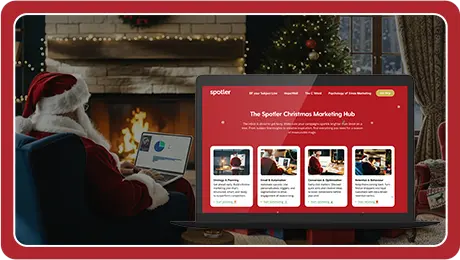Practical knowledge and information about marketing
We create a lot of interesting content about marketing. Take a look at our whitepapers, case studies, blogs, guides and webinar recordings.
No match found
Unfortunately, the search or criteria you selected did not yield any results. Change your search or criteria.
If you have any questions or you need help, please contact us.
Christmas Marketing Hub
The most joyful time of year is now. Time to set up your Christmas campaign. We got you covered with our Christmas toolkit. Everything you need for a beautiful campaign can be found in our hub.
The smart B2B CRM buyer’s guide: 10 must-know factors before you choose
With so many CRM platforms claiming to "boost productivity" or "streamline sales", how to cut through the noise?
From cold website visitors to warm contact: how to be successful with lead management in B2B
How do you generate as many MQLs for your sales team? Let's dive into how to optimise your lead management process.
The Great British Split Test 2025
Does an all-caps subject line grab attention? Where should you put your CTA for max impact? See what Spotler tested on their own audience.
“Breakup emails”: how to re-engage your coldest subscribers
Every marketer has a segment they avoid looking at too closely: the cold list.
Love at first click: Pre and Post Valentine’s campaigns that deliver real revenue
With the right pre and post Valentine’s campaigns, you can lift revenue, strengthen your data and turn one off shoppers into loyal customers. Join us to find out how!
Events without the Hassle: All the Data, None of the Chaos
Get more out of the events you’re already running. Combine efficiency with a professional experience for your attendees and stop leads slipping through the cracks and follow up with ease.
Become the Brand AI Recommends First. Understanding Citation Authority for 2026
One of the biggest emerging opportunities is citation analysis and citation building for AI platforms. Find out how you can get AI to cite your brand via GEO.
Galentine’s Day: the fastest growing seasonal trend marketers should pay attention to
Galentine’s Day has grown from a small cultural moment into one of February’s most commercially interesting trends.
B2B Valentine’s ideas: campaigns that will not make tour audience cringe
Heart emojis and pink colour palettes are less likely to move your business customers. But there are other ways to make use of Valentine’s Day.
How to use personalisation without making it creepy this Valentine’s Day
Buyers want the personal touch, but they don’t want you too close. How do you get the balance right this Valentines Day?
Love, loyalty and LTV: turning Valentine’s shoppers into year-round customers
How do you turn your Valentine’s shoppers from spring fling to long-term relationship?
7 ways to make emails more interactive in 2026
Inboxes are more competitive than ever; it is estimated that 376.4 billion emails were sent every day in 2025.
The Anti-Valentine’s playbook: campaign ideas for the single, cynical and unbothered
“Anti” doesn’t have to mean “bad”: How to engage with the rise of alternatives to Valentine’s Day
Figaro Digital | Winter Digital Marketing Summit London
Spotler will be at Figaro Digital's Winter Digital Marketing Summit this February. We'd love to see you there! The summit is a great day out for marketers looking for solutions.

